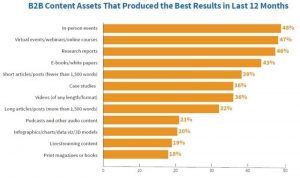— January 30, 2018

15299 / Pixabay
The start of a new year is a great time to reflect upon and review our current marketing efforts, consider what did and didn’t work last year, and how we can move forward more positively.
Many of us will either be seeking inspiration, actively planning or already implementing 2018’s digital strategy. Each year, as the list of viable channels, platforms, mediums, partnerships, techniques, and approaches grows, your strategy must also evolve and adapt in order to hit the target!
Regardless of size or sector, all businesses are now turning to video and animation, seeking ways of standing out from competitors, attracting new customers and adding value to existing ones. Thankfully achieving the above needn’t be expensive or complicated, and by following a process, your organisation should be able to create and share content that helps achieve your objectives.
Load (Plan)
Nothing great was achieved with a plan (or in the absence of a plan, heaps of luck…), so prepare to do some legwork in understanding who you are speaking to, what you wish to tell them and where you’ll meet them (online…)
Most businesses should know on which social channels, forums, websites and blogs, your target customers ‘hang out’. Whether B2B channels like LinkedIn or talking directly to consumers on Facebook and Twitter, for example, it’s imperative you discover where they are BEFORE you develop your campaign or content.
The type of content (promotional, educational etc.) you develop will be reflected by your campaign objectives. Are you hoping to sell more widgets, explain a process, build your brand, promote an event… the list is long, but once you understand why you are making the content, it’s much easier to structure your ideas.
Take Aim (what content)
Are you creating this ‘in-house’ or seeking professional support? Acknowledge your limitations as a content producer and ask yourself ‘will this reflect my brand values or reflect positively on the organisation?’ Whilst audiences may forgive lower quality content on blogs, your new company promo should look as polished as possible. Consider Video Training to upskill your teams if ‘in-house’ production is your chosen route.
Also, consider how you’ll deploy your Video Marketing strategy. Content should always be adapted and designed for the specific channels you decide are most appropriate. Keep duration in mind, whether you’ll need text on screen, use of audio and how best to structure the information. You may need to grab attention right from the start if users are viewing on mobile devices.
Most importantly, keep your audience in mind. What would you like to watch if in their shoes? What information is likely to add value? If you don’t entertain, educate or inform your audiences, you’re unlikely to connect on an emotional level.
Fire (share)
Now you have your content ready to share. How and when you ‘launch’ your videos can make all the difference. Viewer numbers can vary drastically at different times of the day. Each channel will have a peak day and time. Do your homework to ensure best results.
Are you supporting your video content with other marketing assets? How many places can you share your content? YouTube and your website are obvious ones but have a think about which other industry websites, blogs, groups, online news publishers and content aggregators might be good options. Leverage and utilise as many as you can.
To pay or not to pay? Assuming you can precisely target your potential audience, and you have the budget, paying to ‘boost’ content can be well worth the investment. Start small and build up.
Repeat
Forward-thinking marketers will have a plan in place BEFORE they press record. It’s not enough to share a clip and hope for the best. Videos that perform well and deliver results are ‘driven’ hard, shared effectively and supported by a strategy. It’s important to play the long game and evolve your plan as you learn what does and doesn’t work. Be responsive to comments and use metrics to assess success and failure.
Like any form of marketing, results will be dictated by the number of people you reach and engage. Information MUST be relevant, timely and appropriate. Connecting with audiences at the right time, message and place is key.
Digital & Social Articles on Business 2 Community
(77)





